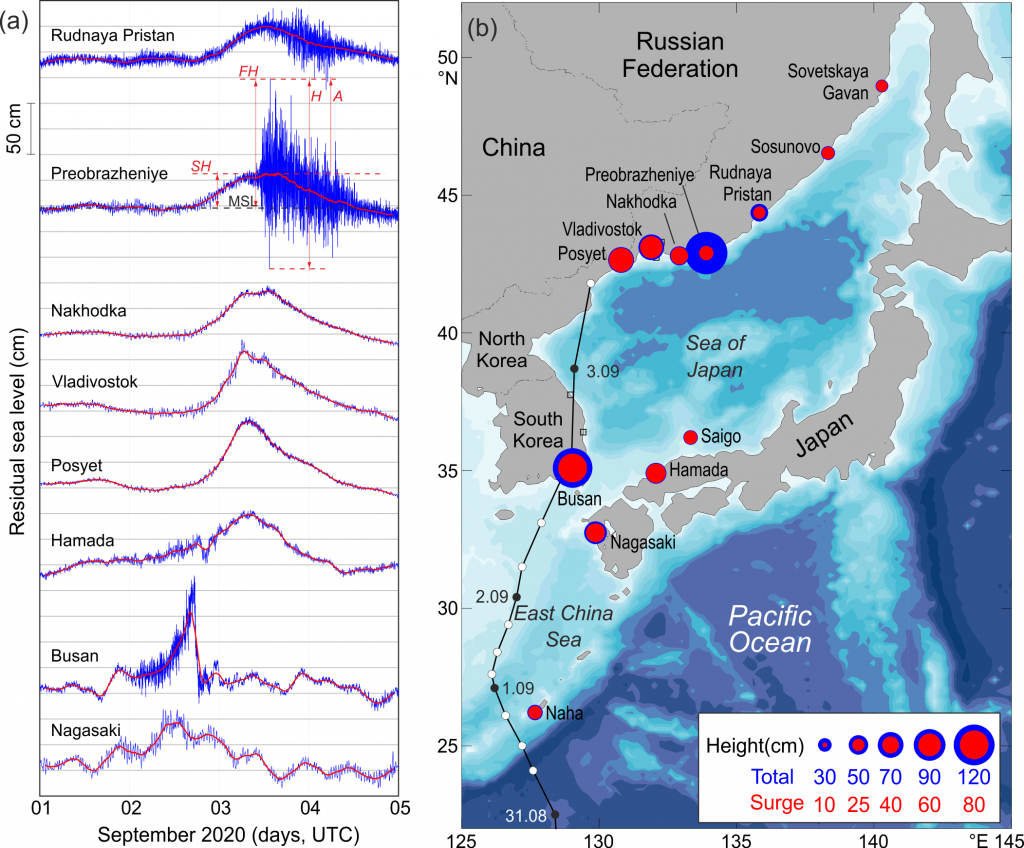
In the last two years, we published three papers related to extreme sea level oscillations generated by typhoons;/hurricanes. The first one is related to the east Asia coast which was hit by typhoon Maysak in September 2020. The second paper is related to the Washington State and British Columbia coasts, which were hit by weakened typhoon Songda in October 2016. And the final paper is related to Hurricane Ian which hit western Florida coast in September 2022. The latest event was the only one during which, in addition to a normal (positive) surge, a reverse (negative one) was also observed.
Our papers include data analysis, numerical modelling of storm surges and meteotsunamis, and detailed discussions.
Heidarzadeh, M.,Iwamoto, T., Šepić, J., Mulia, I. E., 2023. Normal and reverse storm surges along the coast of Florida during the September 2022 Hurricane Ian: Observations, analysis, and modelling. Ocean Modelling, 185, 102250. Doi: https://doi.org/10.1016/j.ocemod.2023.102250
Rabinovich, A.B., Šepić, J., Thomson, R., 2023. Strength in numbers: the tail end of Typhoon Songda combines with local cyclones to generate extreme sea level oscillation on the British Columbia and Washington coasts during mid-October 2016. Journal of Physical Oceanography, 131-155, doi: https://doi.org/10.1175/JPO-D-22-0096.1
Medvedev, I. P., Rabinovich, A. B., Šepić, J., 2022. Destructive coastal sea level oscillations generated by Typhoon Maysak in the Sea of Japan in September 2020. Scientific Reports. doi: https://doi.org/10.1038/s41598-022-12189-2hree